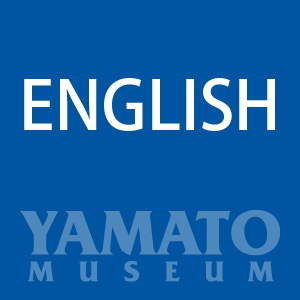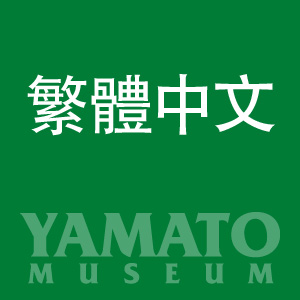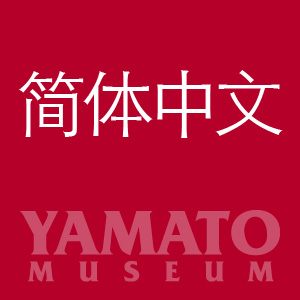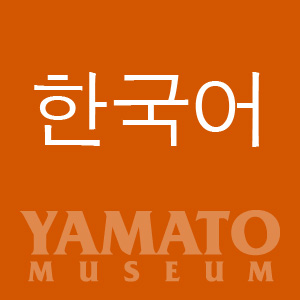Guide Services
Free Guide Service in English is available on every Sunday, between 1:00pm to 4:00pm.
This service may be available on other days if an English-speaking guide is on duty.
There is a sign board stands in the Entrance Hall when this service is available. Please contact the volunteer guide in blue color jacket, or white color vest in summer, if you want to join it.
The guide duration will depend on your preference, within 60 minutes.
Thank you.
About
The city’s history officially began in 1902, when Kure was incorporated after the formation of the Kure Naval Base in 1889. In 1903, the Kure Naval Dockyard was established, where the technology of shipbuilding and steelmaking were dramatically advanced. The city prospered, as Kure became the best naval port in the Far East, and the biggest arsenal town in Japan. Many ships were built here — most famously, the battleship Yamato.
After World WarⅡ, it developed into one of the foremost marine industry cities. Many of the world’s largest tankers were built here. Japan became the world’s leading shipbuilder within a decade of the war’s end.
The Kure Maritime Museum (also known as the Yamato Museum) presents the history of Kure, which is nothing short of the history of the modernization of Japan. We focus on the lives of key people in the city, its culture and industries, primarily shipbuilding and steelmaking, which were crucial aspects of the foundations of the modern nation.
We aim to present a fascinating part of modern Japanese history, and to raise people’s awareness of the tragedy of war; to pass on some of the most important technology to children, who are the future of Japan; and to contribute to regional education, culture and sightseeing.
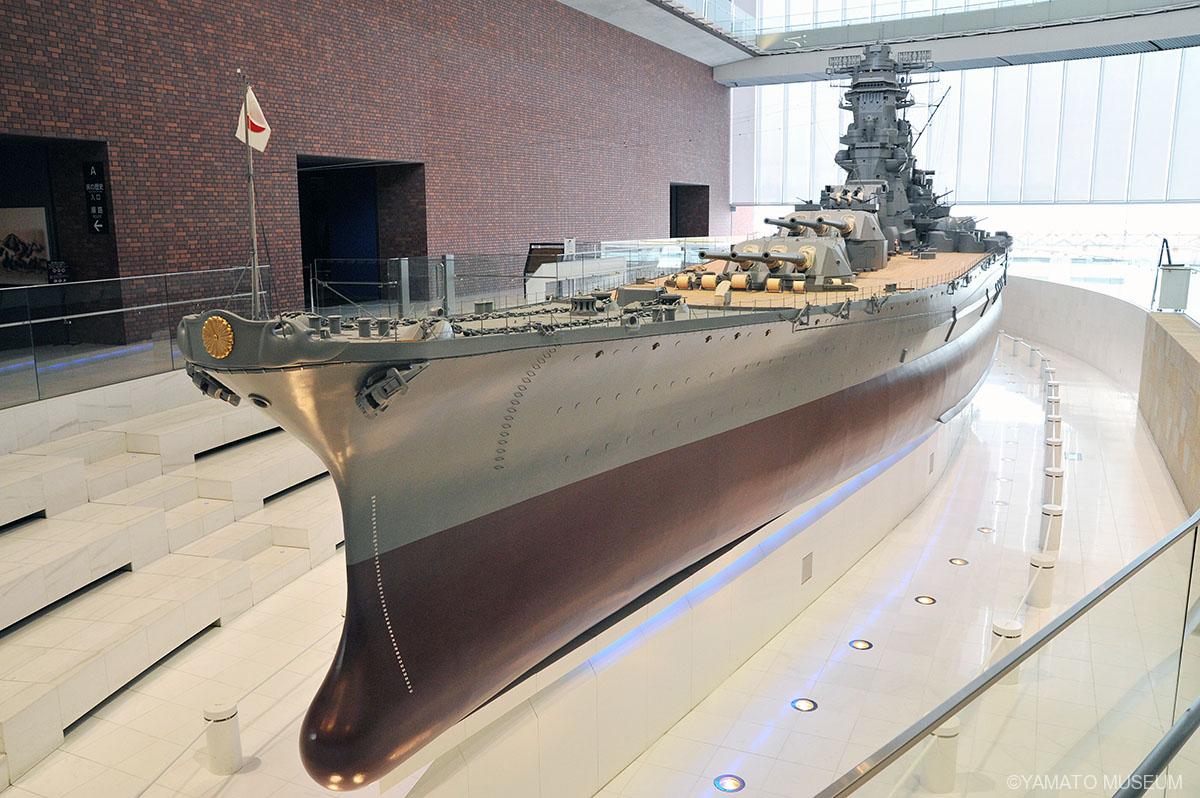
Exhibition
[1F] History of Kure
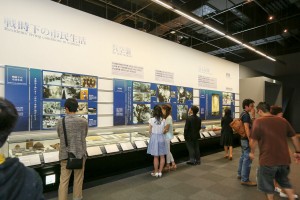 Kure Naval Base was established in 1889, and the Kure Naval Dockyard began operating in 1903.
Kure Naval Base was established in 1889, and the Kure Naval Dockyard began operating in 1903.
This was the best naval port in the Far East, and is most famous as the site where the battleship Yamato was built. Additionally, Kure was the biggest arsenal town in Japan.
After World WarⅡ, technologies cultivated in the time before the war were combined with subsequent advances, which led to Kure becoming one of the foremost marine industry cities anywhere — a place where many of the world’s largest tankers have been built.
[1F] Yamato-Hiroba
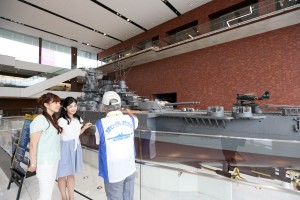 The one-tenth scale model of the battleship Yamato (length:26.3m) is duplicated as accurately as possible, based on original drawings, photos, and underwater images done by submersible surveys. As the centerpiece of the Yamato Museum, this one-tenth scale model of the battleship Yamato conveys the importance of peace and the potential of industrial technology to future generations.
The one-tenth scale model of the battleship Yamato (length:26.3m) is duplicated as accurately as possible, based on original drawings, photos, and underwater images done by submersible surveys. As the centerpiece of the Yamato Museum, this one-tenth scale model of the battleship Yamato conveys the importance of peace and the potential of industrial technology to future generations.
[1F] Large Objects Exhibition Room
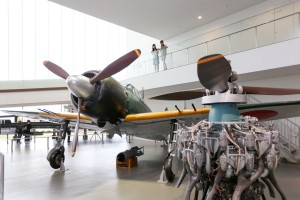 Some authentic items such as a Zero fighter Type 62 and a human torpedo Kaiten convey the horrors of war and the importance of peace.
Some authentic items such as a Zero fighter Type 62 and a human torpedo Kaiten convey the horrors of war and the importance of peace.
[3F] Shipbuilding Technology
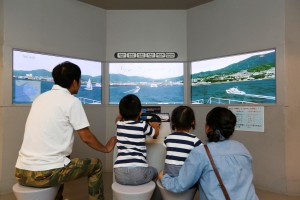 A Ship-handling simulator, test tank, science shows and handicraft classes encourage hands-on, fun learning about the principle of ship-based scientific technology.
A Ship-handling simulator, test tank, science shows and handicraft classes encourage hands-on, fun learning about the principle of ship-based scientific technology.
[3F] Future Prospects
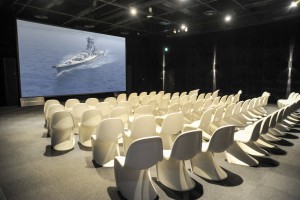 Here we explore the potential of science and technology relating to the earth and the universe, while featuring messages to future generations from the museum’s honorary director and others.The Yamato theater features a set of library shots from JAXA’s collection as well as the construction process of the battleship Yamato created by new CG technology.
Here we explore the potential of science and technology relating to the earth and the universe, while featuring messages to future generations from the museum’s honorary director and others.The Yamato theater features a set of library shots from JAXA’s collection as well as the construction process of the battleship Yamato created by new CG technology.
[4F] Observation Terrace
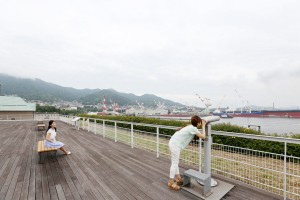 Visitors get an excellent panorama of Kure Port from the Observation Terrace on the 4th floor. From here, yon can see the dock which was where the Yamato was built, plus huge tankers and several passing vessels. It is possible to see, from time to time, a submarine under the steam.
Visitors get an excellent panorama of Kure Port from the Observation Terrace on the 4th floor. From here, yon can see the dock which was where the Yamato was built, plus huge tankers and several passing vessels. It is possible to see, from time to time, a submarine under the steam.
[4F] Library
 Here, you can read books about ships and history, and learn about aspects of the museum’s collection that are not normally on display, by using our computer database.
Here, you can read books about ships and history, and learn about aspects of the museum’s collection that are not normally on display, by using our computer database.
Museum Hours
- 9:00 – 18:00 (Exhibition Rooms entrance permitted until 17:30)
- Library 9:00 – 17:00
Museum Closed
Tuesdays (If Tuesday is a holiday. the Museum will be closed on the following day.)
Open everyday between April 29 and may 5, between July 21 and August 31, and between December 29 and January 3.
Admission Fee
| Division | Individual Fee | Group Fee (20 or more people.) |
|---|---|---|
| Adults(includes college students) | ¥ 500 | ¥ 400 |
| High School Students | ¥ 300 | ¥ 200 |
| Elementary & Jr.High Students | ¥ 200 | ¥ 100 |
Access
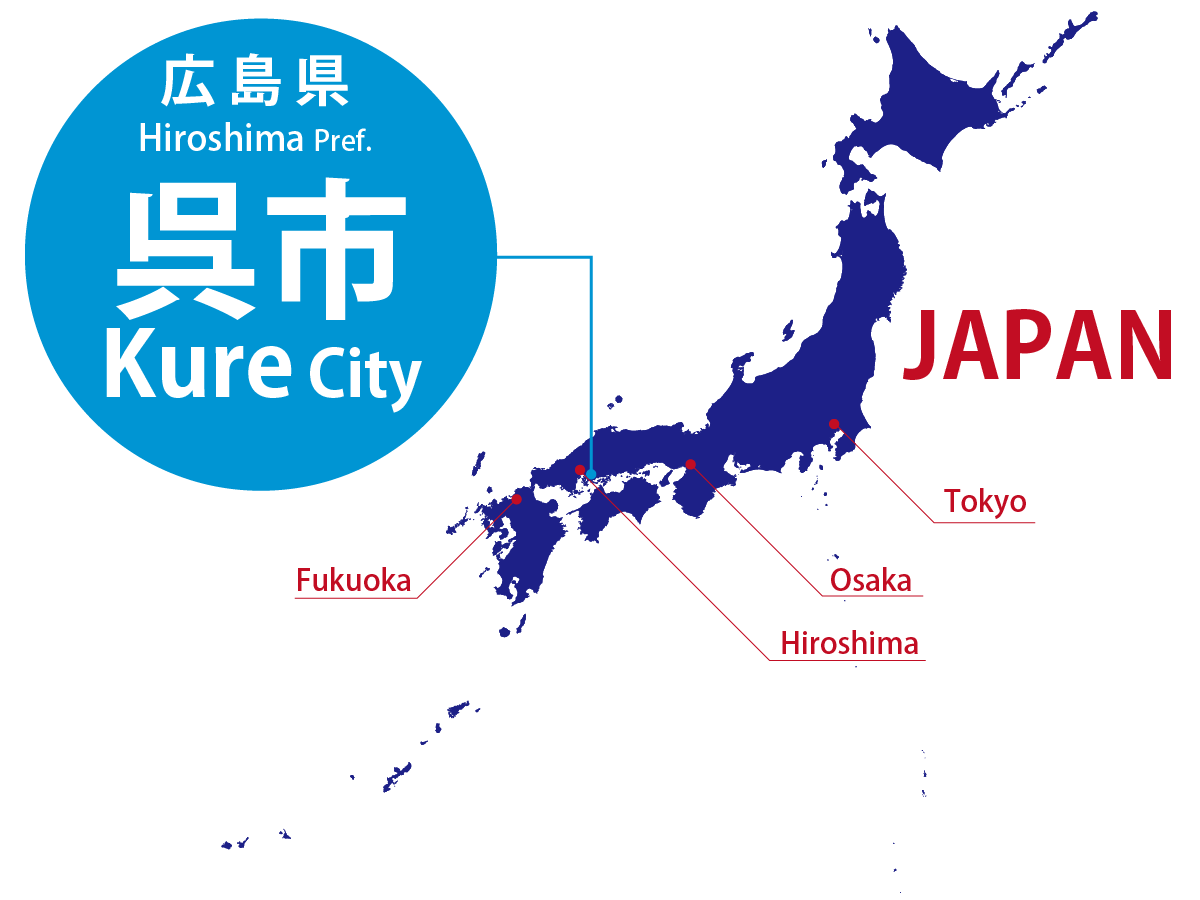
by JR
- Approximately 32 minutes JR Hiroshima Station by JR Kure Line Rapid Liner, and approximately 5 minutes on foot from JR Kure Station.
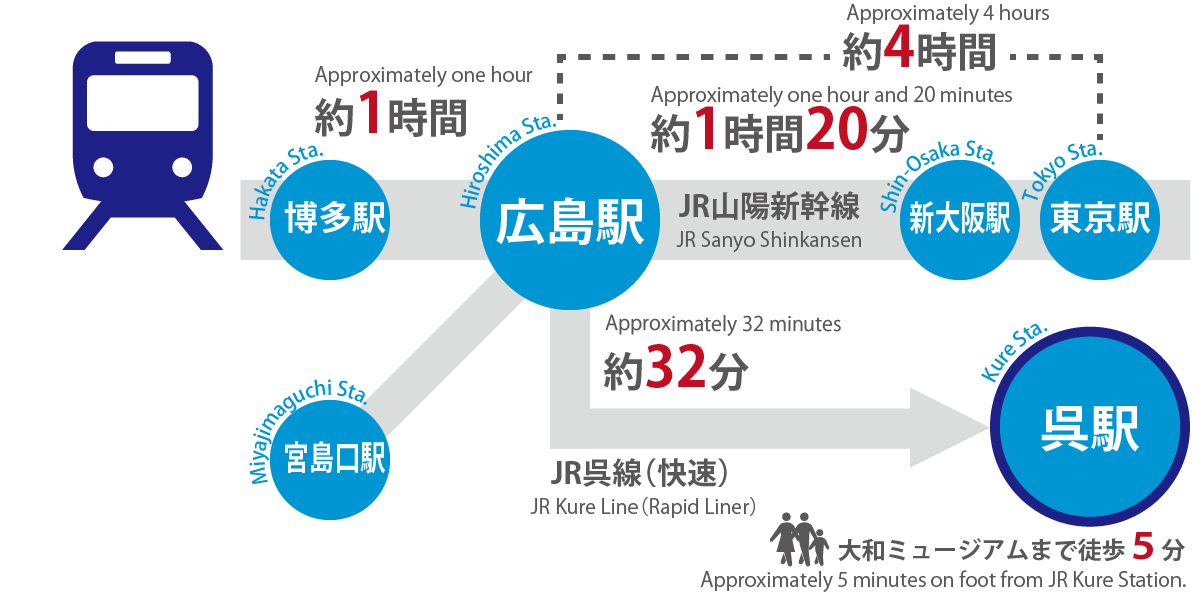
by Car
- Approximately 20 minutes by Hiroshima-Kure Road from the direction of Hiroshima, and approximately 5 minutes from Kure Interchange.
- Approximately 35 minutes by Hiroshima Expressway – Hiroshima Kure Road from Sanyo Expressway(Hiroshima-higashi JCT), and approximately 5 minutes from Kure Interchange.
- Approximately 40 minutes by Higashihiroshima-Kure Expressway from Sanyo Expressway(Takaya JCT).
- Yamato Museum Parking Lot, capacity:67cars.(¥100 par hour)
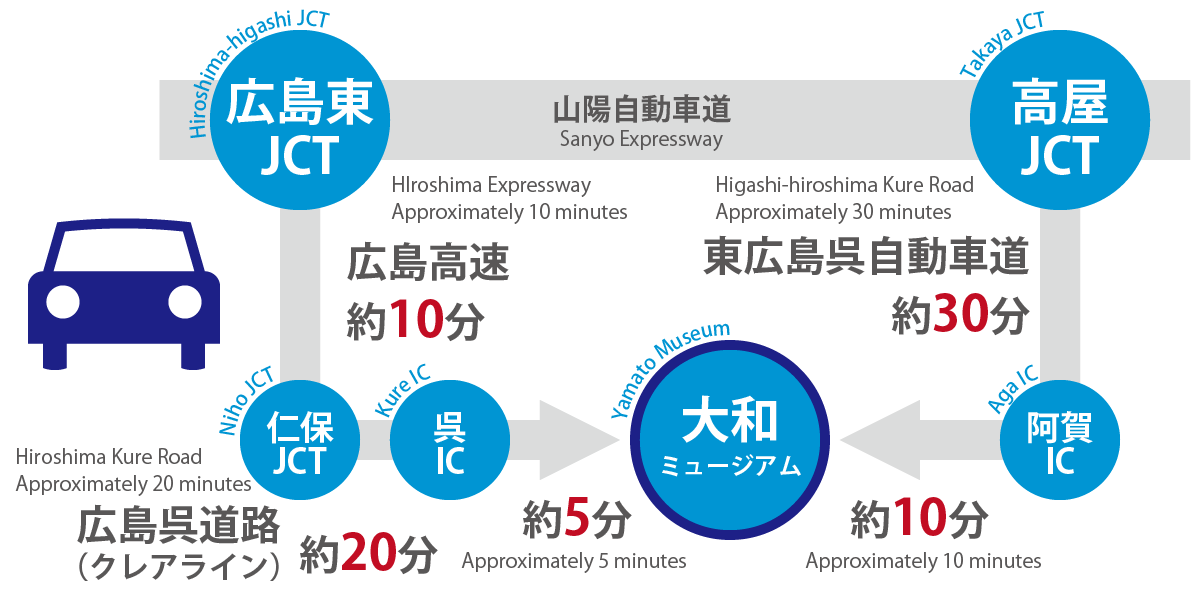
by Bus
- Approximately 46 minutes from Hiroshima Bus Center to the front of JR Kure Station, and approximately 5 minutes on foot from JR Kure Station.
- Approximately 58 minutes from Hiroshima AirPort to the front of JR Kure Station, and approximately 5 minutes on foot from JR Kure Station.
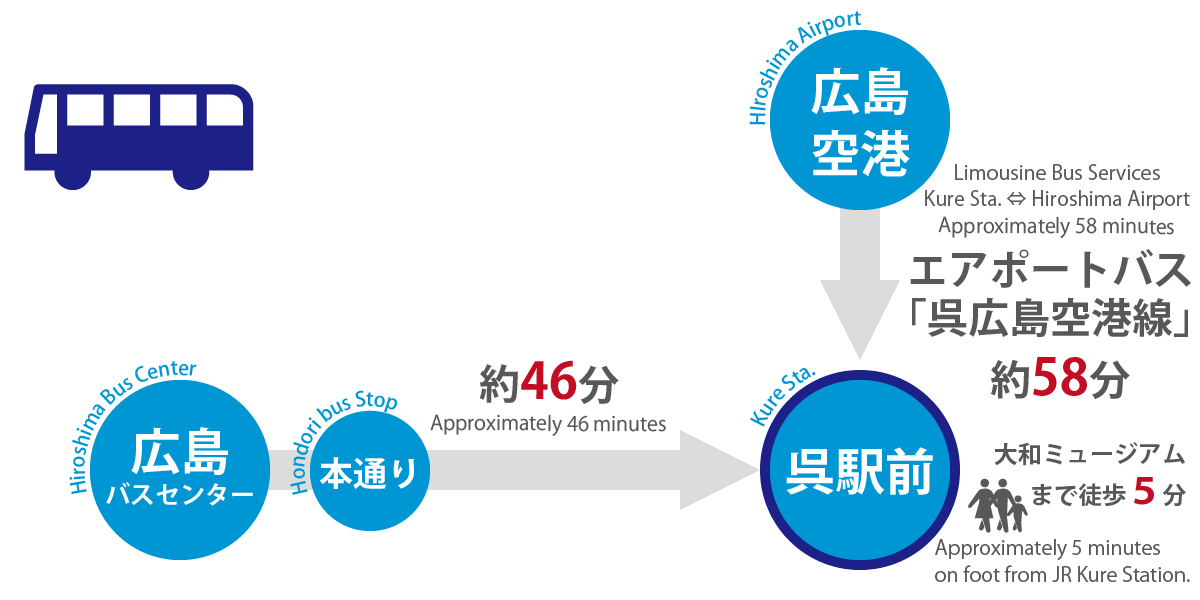
by Ferry
- Approximately one minute on foot from Kure Chuo Sanbashi.
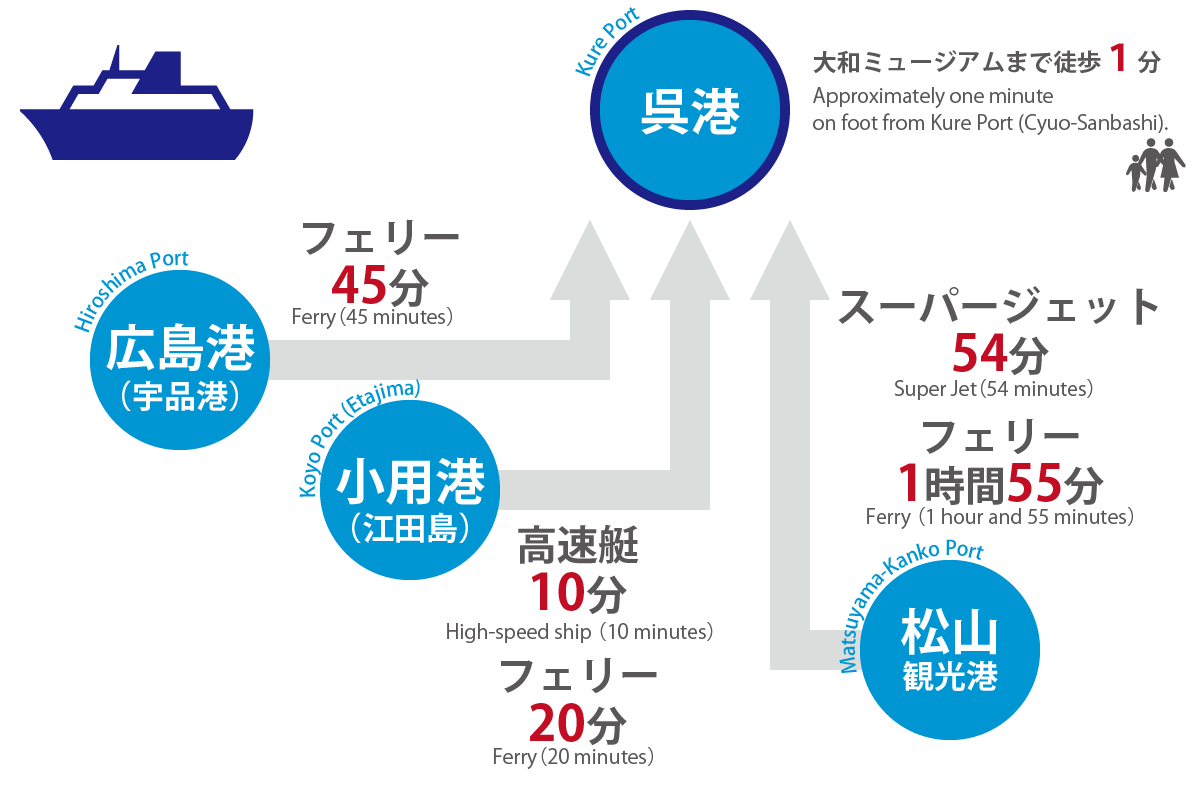
Contact & Information
Name:
呉市海事歴史科学館(Kure-shi Kaiji Rekishi Kagakukan)
愛称:大和ミュージアム(Yamato Museum)
Kure Maritime Museum
NickName: Yamato Museum
Location:
5-20, Takaramachi, Kure City, Hiroshima, 737-0029, Japan
Telephone:
+81-823-25-3017
Facsimile:
+81-823-23-7400
e-mail:
info@yamato-museum.com

